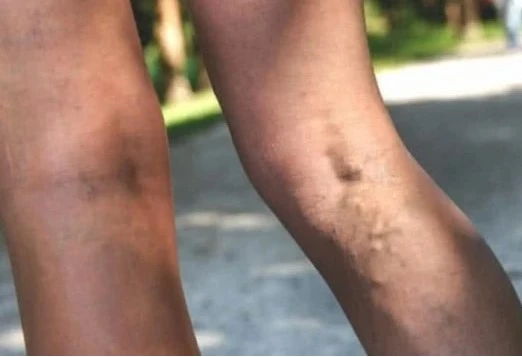Recent Blogs
- Free Health Screenings Are Quick and Simple
- Early Symptoms of Varicose Veins You Should Never Ignore
- The Link Between Obesity and Varicose Veins Explained
- Vein Diseases Linked with Superficial and Deep Veins
- Sclerotherapy An Effective Treatment for Varicose and Spider Veins
- What Should You Know About Flying After Sclerotherapy?
- World Mental Health Day 2019: Suicide Prevention
- What Are The Differences of Superficial and Deep Veins?
- What's Behind the Sudden Appearance of Pesky Spider Veins?
- Can Dietary Modifications Play a Role in Managing or Preventing Varicose Veins?
Published on: 30-Jan-2019
Last updated: 23-Jul-2025

If lifestyle changes such as regular walking, wearing compression stockings, or elevating the legs are not enough to manage superficial saphenous vein issues, medical treatment may be necessary. Superficial saphenous vein insufficiency can cause discomfort, swelling, or visible veins, affecting both health and appearance. Fortunately, a range of modern, minimally invasive treatments are available today. With the help of a vascular specialist and ultrasound-guided evaluation, patients can access safe and effective solutions that relieve symptoms and improve circulation.
1. Endovenous Thermal Ablation (EVTA)
Endovenous thermal ablation, which includes radiofrequency ablation and endovenous laser therapy, is one of the most effective and widely used treatments for saphenous vein insufficiency. This office-based procedure uses a thin catheter inserted into the affected vein using ultrasound guidance. After the area is numbed with local anesthesia, heat energy is applied to close the vein. Once the faulty vein is sealed, blood naturally reroutes through healthier veins nearby. Patients often experience immediate relief from symptoms like leg heaviness, aching, and fatigue. The procedure offers more than 95 percent long-term success and requires little to no downtime.
2. Ultrasound Guided Foam Sclerotherapy
Foam sclerotherapy is a minimally invasive treatment that involves injecting a foamed medication into the targeted vein to irritate the vein walls, causing them to collapse and close. When performed with ultrasound guidance, this treatment becomes even more precise, especially for veins that are not visible at the surface. Foam sclerotherapy is particularly useful for treating the great saphenous vein or small saphenous vein and is often selected for patients who cannot undergo thermal ablation or prefer a non-heat-based option. Recovery is quick and results are visible in just a few weeks.
3. Ambulatory Phlebectomy
Ambulatory phlebectomy is a procedure used to remove smaller, bulging surface veins that remain after treating deeper veins. A vascular specialist makes tiny punctures in the skin and removes the faulty vein using a specialized hook-like instrument. No stitches are needed, and the punctures heal naturally. This treatment is typically done under local anesthesia and provides excellent cosmetic results. It is often combined with other treatments to enhance effectiveness and restore the natural appearance of the legs.
Why These Modern Vein Therapies Are Preferred
- Less downtime and faster recovery. Most patients walk immediately after the procedure and resume normal routines within a day or two.
- High effectiveness with long-term results. Endovenous ablation shows over 95 percent success, while sclerotherapy and phlebectomy also provide lasting relief.
- Better safety profile. These modern techniques have fewer complications compared to traditional vein stripping procedures.
- Improved comfort and appearance. Patients report relief from pain, heaviness, swelling, and visible veins.
Choosing the Right Treatment for Your Vein Condition
The best treatment for superficial saphenous veins depends on several factors, including the size and location of the vein, the severity of the condition, and your overall health. A vascular specialist will usually begin with an ultrasound scan to examine how your veins are functioning and identify which ones are damaged.
Based on this assessment:
- Endovenous ablation is often recommended for long, straight veins that show backward blood flow (reflux). This procedure works well for deeper saphenous veins.
- Foam sclerotherapy is suitable for medium-sized or curved veins, especially if you're looking for a non-thermal, injection-based option. It’s also useful when heat-based treatments are not ideal.
- Ambulatory phlebectomy is best for bulging surface veins that are visible under the skin. These veins are usually removed after deeper veins are treated.
- In many cases, a combination of treatments may be used to address both underlying vein problems and cosmetic concerns, giving you the most effective and lasting results.
A personalized treatment plan ensures that each affected vein is treated using the method that offers the best safety, comfort, and success for your specific case.
Personalized Care at Comprehensive Vein Care
At Comprehensive Vein Care, we tailor every treatment to your individual condition. Whether you're dealing with discomfort, cosmetic concerns, or both, our board-certified team provides solutions that are clinically proven, minimally invasive, and focused on lasting relief. Book a consultation today to explore your best options for vein health.
Frequently Asked Questions
1. Is vein treatment painful?
Most procedures involve only local anesthesia and are well tolerated. Patients may feel mild pressure or tugging but no significant pain.
2. What is the recovery time?
Most individuals can return to light activities on the same day. Compression stockings may be worn for a few days to aid healing.
3. Do results last?
Yes, treated veins are permanently closed or removed. However, new vein problems can occur in the future, especially if underlying risk factors remain.
4. Are there any risks?
Minor side effects like bruising, tenderness, or itching are possible. Serious complications such as deep vein thrombosis are rare but can occur in less than one percent of cases.